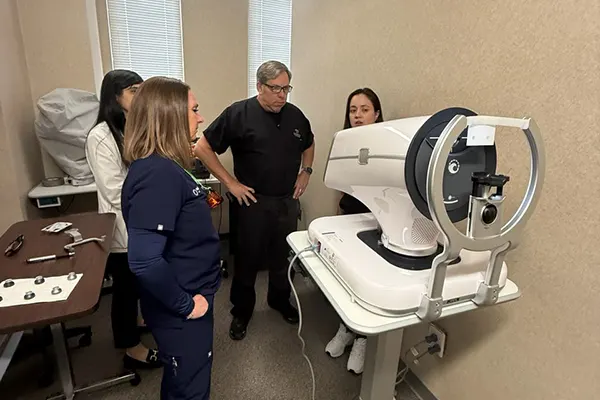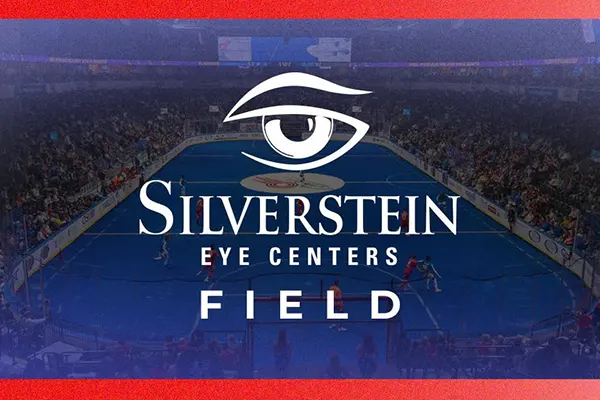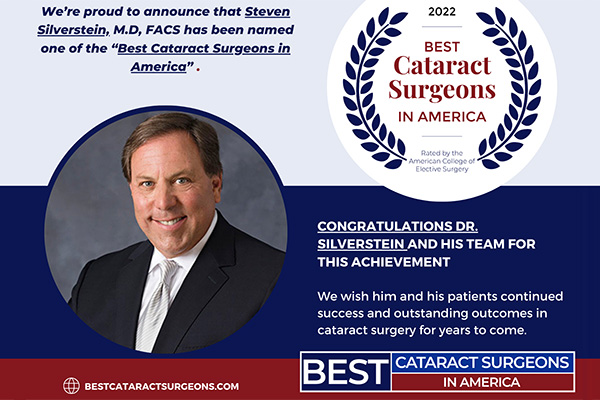Glaucoma Treatment
Glaucoma Treatment Available at Silverstein Eye Centers
Lowering eye pressure has been proven to slow or halt progression of glaucoma. Your doctor will determine an eye pressure target based on the initial eye pressure and the amount of damage present.
Eye drops are typically used as a first approach to lower eye pressure. A healthy pressure is achieved when fluid production and drainage are balanced in the eye. Some drops decrease the amount of fluid that the eye produces while other drops improve drainage inside the eye. Often several eye drops are necessary to achieve the eye pressure target.
Eye drops are not without side effects. Mild burning or stinging, cosmetic changes, allergic reactions, and systemic side effects are possible.
When eye drops do not lower the eye pressure enough, laser trabeculoplasty can be used to remodel the drain of the eye, resulting in lower eye pressure.
Lasers are also used to perform laser iridotomy for people who have narrow angles or angle-closure glaucoma.
If both eye drops and laser trabeculoplasty are not effective enough in lowering eye pressure, glaucoma surgery is usually recommended. Microincisional techniques are revolutionizing glaucoma surgery with faster healing and a lower risk of complications. Silverstein Eye Centers is at the leading edge of these new and improved glaucoma surgeries. Canaloplasty is like angioplasty for the eye. A catheter is threaded through the drainage canal of the eye and a stent is placed to increase drainage in the eye. We also participate in studies for FDA approval of new minimally invasive glaucoma procedures.
While the new surgical techniques for glaucoma are promising, some patients are not candidates for these procedures and require trabeculectomy or glaucoma drainage devices to create a new drain for the eye. These procedures are some of the most effective in lowering eye pressure but have a higher rate of complications.
What is a Glaucoma Screening Exam?
A complete eye exam will detect glaucoma damage. Examination of the optic nerve for damage is the most important component. The optic nerve typically has healthy tissue extending to the blood vessels in the center of the nerve. As the optic nerve is damaged, the optic cup enlarges in the center of the optic nerve. In advanced glaucoma nearly all of the optic nerve has been lost and blindness is imminent.
The eye pressure, a balance between the fluid produced in the eye and the fluid drainage from the eye, is also measured. Most people have measurements between 12 and 21. Usually eye pressure is elevated in glaucoma, but sometimes glaucoma damage occurs at “normal” pressure. The corneal thickness is measured to determine the accuracy of the eye pressure measurement. Gonioscopy, direct examination of the drain of the eye, is performed to look for scar tissue obstructing the drain inside the eye.
If the optic nerve or eye pressure is abnormal more detailed tests for glaucoma are performed. These include a visual field test and computerized optic nerve scan. An abnormal test result confirms the presence of glaucoma damage.
Glaucoma Classification
An ocular hypertensive has an elevated eye pressure but no evidence of glaucoma damage on visual field testing and optic nerve scan. If the eye pressure is less than 30 and few risk factors for glaucoma are present, observation and repeat glaucoma testing every 6 months is recommended. If the eye pressure is less than 30 and significant risk factors for glaucoma are present, treatment is recommended. If the eye pressure is greater than 30, the risk of developing glaucoma is so high that treatment is recommended.
A glaucoma suspect has an abnormal optic nerve appearance but no evidence of glaucoma damage on visual field testing and optic nerve scan. Repeat glaucoma testing is recommended every 6 months to monitor for the development of glaucoma.
Open angle glaucoma or “normal” eye pressure, and glaucoma damage on visual field and/or optic nerve scan. Treatment is initiated and discussed below.
While there is no cure for glaucoma, severe visual loss is usually avoidable. The treatment of glaucoma represents an important, lifelong partnership between the doctor and the patient.


